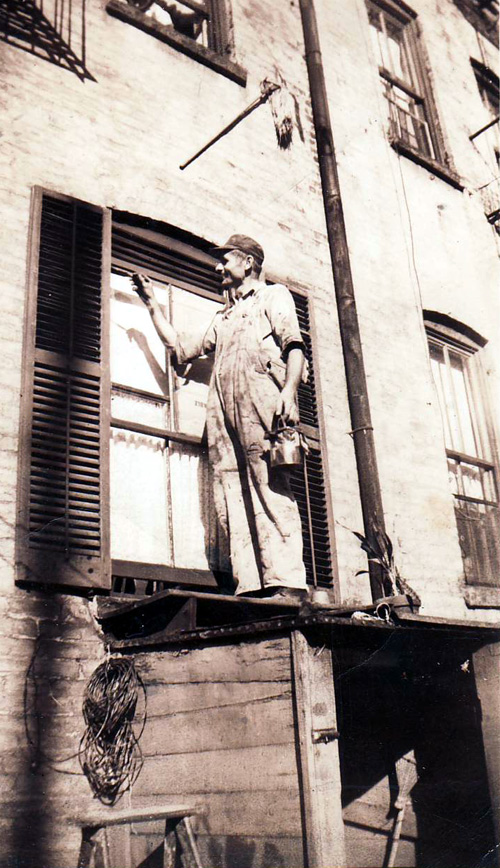The below piece was written by Susan Yelavich, Director of the MA Design Studies program, in response to last week’s historical U.S. presidential election outcome.

Mate Yelavich, handy man, c. 1950.
By sheer coincidence, my students and I read Clive Dilnot’s 2012 essay “Chris Killip: The Last Photographer of the Working Class”1 on our blackest Tuesday: Election Day, November 8th. (We were originally meant to discuss it a week earlier.) Either way, back in August when I was refining the syllabus, it didn’t cross my mind how acutely relevant his discussion of Killip’s photographs would prove.
Killip lived among those who experienced the brutal effects of the disappearance of work in northern England in the late 1970s through the 1980s under the conservative policies of Margaret Thatcher. His portraits of a devastated landscape, of coal miners, factory workers, their families and children, and adolescent punks capture an anger that is only now visceral to liberal America in 2016.
I had taught this reading several times before and thought it prescient – at least theoretically. This error on my part is precisely the problem. The reduction of the working class to an abstraction – this, even with my family’s blue-collar bona fides – has contributed mightily to the class/culture divide now raging in the United States and Europe. This, as Clive reminds us, is because:
…unless it could be rethought in terms of a monetized economy (as the “undeserving poor,” the “illegals,” and “economic refugees” the “working class” became an embarrassment for progressive culture and politics. 2
Now it is we who are embarrassed by our complacency, our willingness to assume that ‘this too will pass.’ Is there a way out of the impasse between those who mourn the loss of ways of living – think coal mining, now and then – and those who fear the dangers of clinging to the familiar at the expense of difference, especially in matters of race and gender? I’m not sure, but oddly, one model of hope comes from the Thatcher era. You can watch it unfold in Pride, a film by Matthew Warchus based on the true story of London-based gays and lesbians who go to Wales in 1984 to lend their support to striking coal miners.
Eerily enough Pride was made in 2014, just two years after Clive wrote his review of Chris Killip’s photographs. Both manage to collapse four decades and show history’s relevance in a time when history is all but completely devalued in favor of the next trend, the next opportunity, and the next empty promises.
Someone, somewhere, is photographing people in long-shuttered steel towns. Someone, somewhere, is photographing people in grossly-neglected housing projects and dilapidated inner-ring suburbs. Someone, somewhere is photographing depressed white-collar workers laid off in late-middle age with little hope of working again. And, no doubt, our phones are filled with pictures of people (whether we teach them or know them as fellow-students) whose ambitions will be surely affected by unforgiving loans.
Someone, somewhere, should put those images side by side. Not in a gallery, but in grocery stores, gas stations, and malls where they might have a chance of truly being seen, felt, and acted upon.
1 Dilnot, Clive. “Chris Killip: The Last Photographer of the Working Class.” Afterimage: The Journal of Media Arts and Cultural Criticism 39, no. 6 (May/June 2012), 15-18.
2 Ibid., 18.


























